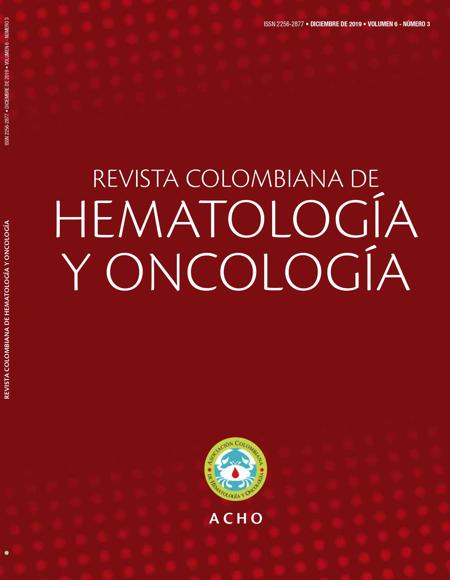Inhibidor de punto de control inmunitario en melanoma pediátrico : reporte de caso.
Immune checkpoint inhibitor in pediatric melanoma : case report.

Esta obra está bajo una licencia internacional Creative Commons Atribución-NoComercial-CompartirIgual 4.0.
Mostrar biografía de los autores
Se presenta el caso de una paciente femenina de 15 años que desarrolló un melanoma maligno estadio IIID en la región glútea izquierda. La paciente fue sometida a resección local de lesión y biopsia de ganglio centinela. Posteriormente, fue tratada con terapia adyuvante con interferón, desafortunadamente la paciente abandonó el tratamiento, retomándolo cuatro meses después y se documenta progresión de la enfermedad; en ese momento recibió tratamiento con un inhibidor de punto de control inmunitario, presentando una respuesta desfavorable, con progresión de la enfermedad. Este reporte de caso destaca los hallazgos clínicos de esta patología y presenta controversias relacionadas con el tratamiento con un inhibidor de punto de control inmunitario en el melanoma pediátrico.
Visitas del artículo 160 | Visitas PDF 146
- Indini A, Brecht I, Del Vecchio M, et al. Cutaneous melanoma in adolescents and young adults. Pediatr Blood Cancer. 2018;e27292.
- Dean P, Bucevska M, Strahlendorf C, et al. Pediatric melanoma: A 35-year population-based review. Plast Reconstr Surg Glob Open. 2017;5(3):e1252.
- Ferrari A, Bisogno G, Cecchetto G, et al. Cutaneous melanoma in children and adolescents: the Italian rare tumors in pediatric age project experience. J Pediatr. 2014;164(2):375-82.
- Larsen A, Jensen M, Krag C. Long-term survival after metastatic childhood melanoma. Plast Reconstr Surg Glob Open. 2014;2:e163.
- Albino F, Wood B, Oh A, et al. A case of pediatric melanoma: treatment considerations in advanced disease. Plast Reconstr Surg Glob Open. 2015;3:e402.
- Bernal L, Russi A, Lizarazo D, et al. Estrategias de adyuvancia en melanoma: actualización e implicaciones para la práctica. Rev. Cáncer de Piel. 2018;1(1):31-4.
- Ceballos P, Ruiz R, Mihm M. Melanoma in children. N Engl J Med. 1995;332:656-62.
- Rousi E, Koskivuo I, Kaarela O, et al. Clinical and pathological aspects of melanoma among children in Finland. Acta Derm Venereol 2016;96:718-20.
- Paradela S, Fonseca E, Pita S. Prognostic factors for melanoma in children and adolescents. Cancer. 2010;116:4334-44.
- Strouse J, Fears T, Tucker M, et al. Pediatric melanoma: risk factor and survival analysis of the surveillance, epidemiology and end results database. J Clin Oncol. 2005;23(21):4735-41.
- Kinsler V, O’Hare P, Bulstrode N. Melanoma in congenital melanocytic naevi. Br J Dermatol. 2017;176(5):1131-43.
- Robert C, Long G, Brady B, et al. Nivolumab in previously untreated melanoma without BRAF mutation. N Engl J Med. 2015;372:320-30.
- Weber J, Mandala M, Del Vecchio M, et al. Adjuvant nivolumab versus ipilimumab in resected stage III or IV melanoma. N Engl J Med. 2017;377:1824-35.
- Popat S. Hyperprogression with immunotherapy: is it real? Editorial. Cancer. 2019;125(8):1218-20.
- Champiat S, Ferrara R, Massara C. Hyperprogressive disease: recognizing a novel pattern to improve patient management. Nat Rev Clin Oncol. 2018;15(12):748-62.
- Yilmaz M, Akovali B. Hyperprogression after nivolumab for melanoma: a case report. J Oncol Pharm Pract. 2019 May 8:1078155219845436.
- Ji Z, Peng Z, Gong J. Hyperprogression after immunotherapy in patients with malignant tumors of digestive system. BMC Cancer. 2019;19:705.
- Ferrara R, Mezquita L, Texier M, et al. Hyperprogressive disease in patients with advanced non- small cell lung cancer treated with PD-1/PD- L1 inhibitors or with singleagent chemotherapy. JAMA Oncol. 2018;4(11):1543-52.
- Borcoman E, Nandikolla A, Long G, et al. Patterns of response and progression to immunotherapy. American Society of Clinical Oncology Educational Book. 2018;38:169-78.
- Popat V, Gerber D. Hyperprogressive disease: a distinct effect of immunotherapy? J Thorac Dis. 2019;11(Suppl 3):S262–5.










